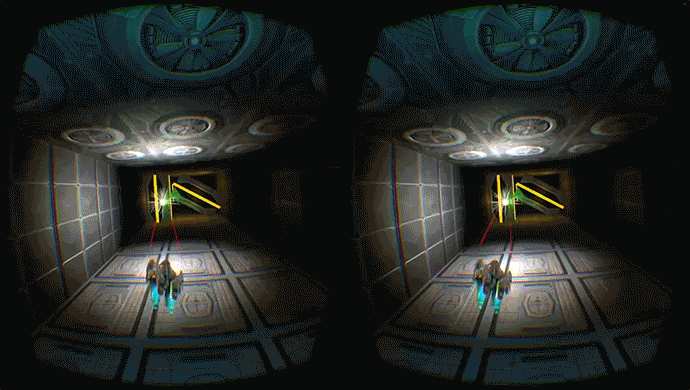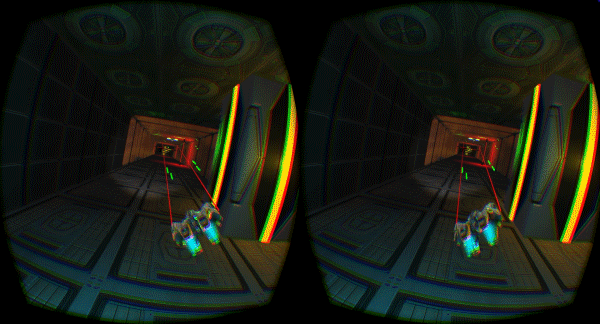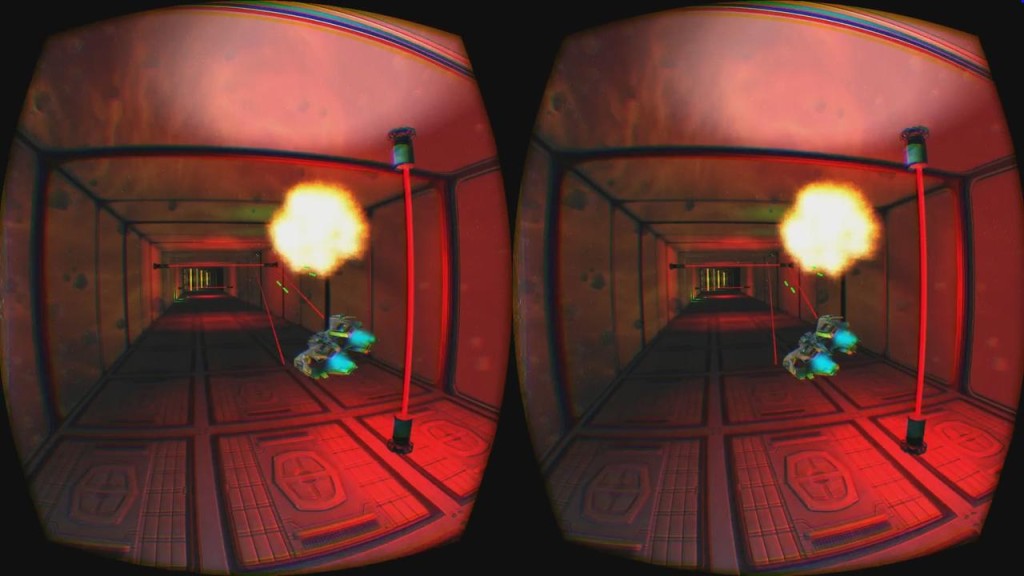Over the next several weeks, we’re spotlighting the top 20 3D Jam experiences chosen by the jury and community votes. These spotlights will focus on game design, interaction design, and the big ideas driving our community forward.
A mix between endless runner and shoot ’em up, Studio 17’s Corridor 17 blends old-school and new-school game design tactics in a VR environment. Players can pilot the ship with their head using the Oculus Rift DK2, while freeing up his or her hands to control the weapon system. It’s available free for Windows on the Leap Motion App Store.

What was your inspiration combining runner and shooter mechanics within a space motif?
The funny thing is that we didn’t have any idea what we were going to do for the Jam when we signed up. It took us two weeks of feverishly burning through ideas and prototyping game mechanics before we stumbled upon what would eventually become the runner and shooter mix that is Corridor 17.
While we didn’t specifically reference any game titles, we did spend a lot of time watching Star Wars: Return of the Jedi – specifically the scene where the Millennium Falcon flies through the Death Star and ultimately destroys it.
There’s something undeniably electrifying about the “endless run” mechanic. What sort of obstacles and visual cues did you use to build an addictive gameplay arena?
We wanted to make sure that each category of obstacle/trap would be easily identifiable from a distance to give the player a chance to plan ahead. To achieve that, we gave each obstacle type a distinct color theme. For example, laser-trapped corridor sections are easily identifiable by their glass walls and reddish lights, while closed doors can be identified by the green glow emitted from their locking mechanisms.

After developing for Leap Motion and VR with Unity, do you have any cautionary tales from the trenches?
It’s probably a bad idea to design an app (like we did) which requires the player to have both hands in front of the Oculus Rift for an extended period of time. Apart from being an obvious recipe for sore arms, having both hands up at the same time can mess with the Oculus Rift’s position tracking capability. In a fast paced game like Corridor 17, having position tracking fuzz out mid-dodge can be pretty catastrophic.
Can you delve into how you built the control scheme?
While we’d really like to provide some profound technical insights here, the truth is that both Leap Motion Controller and Oculus Rift come with really great Unity integration packages – so most of the heavy lifting was already done for us. The only modification we had to make was a scaling component for translating slight shifts of the player’s head into movements which would span the width and height of the corridor.

Any plans to continue developing with Leap Motion, Unity, and Oculus in 2015?
Yup, definitely! We’re still deciding where we want to go with Corridor 17 and may revive some of the other game mechanics we had to discard along the way due to time constraints. We had originally intended to have unlockable achievements and an option to publish your high scores, so we might go back and implement that. Either way, it looks like it’s going to be an interesting year!
